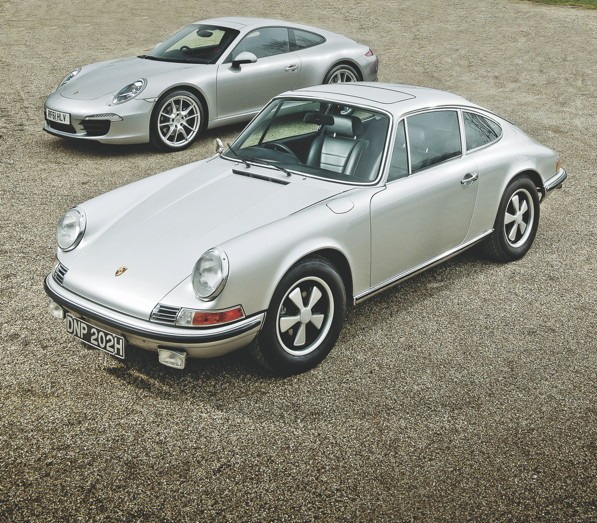Thought of the day: Towing the line
“The master of investment, Warren Buffett, tells us that in order to be successful we have to do more things right than wrong; more peaks than troughs, if you will. Marvin Lee Aday (of Meat Loaf)’s lyrics, ‘two out of three ain’t bad’, concurs with that. Do things right 67 per cent of the time, and you’ll be on top of things.
In the case of Porsche, however, two out of three would never have been good enough because the removal, however temporary, of passion, work ethic and vision would have spelt the instant demise of that 911 line and shape that we have grown to love.
The month of April, which saw the passing of Ferdinand Alexander Porsche and Anatole ‘Tony’ Lapine, was a sad one for both the Porsche family and brand and its millions of aficionados. While the majority of those fans would be dedicated to the 911, there would be a number who would be devotees of either the lesser acknowledged models or those busy making their mark, and a vital contribution to financial well-being. Porsche’s operating margins, as opposed to the other definitive marques, speak for themselves.
Ferdinand, to his eternal credit, was the father of the legend that is the 911. Lapine, on the other hand, nurtured the development of the water-cooled 928, which at one point was poised to take over the 911 as the latter’s future was ‘rationalised’. In fact, he made no secret of his dislike for the 911. Polarised opinions and attitudes? No, not at all. Let’s look at the unifying similarities, and we can understand how one model – against all odds – has not only survived, but thrived as its 50th birthday approaches.
Ferdinand was influenced by his father and Porsche’s prior developments, namely the four-cylinder air-cooled 356 that was produced in large numbers, but well-received over a 15-year period. Additionally, the manufacturer illustrated its financial acumen by providing consultation to Volkswagen in the development of the iconic Beetle. For this, they also received royalties on every one produced. So there we have the early beginnings that would begin to provide a launchpad for the 911 to come. Total 911 contributor Gina Purcell first owned a VW Beetle because it was the nearest thing to the 911 she could afford. Even today, critics of the 911 lines refer to it as a ‘stretched-out Beetle’. That being the case, it must have taken some collective grey matter to transform the stretched-out Beetle into the water-cooled marvel that is Michael Mauer’s 991.

What we must understand is that both Ferdinand and Lapine were artists and creators first and foremost. As artists they had to have the latitude of expression to pursue their ultimate form. In fact, looking at the 911 alongside the 928, there is no doubt whatsoever that at worst these are close cousins, and at best identifiable brothers. Few other car makers have done that. Two that come to mind are the Fiat 500 and the Mini Cooper; the former with breaks in its continuity line and the second by being a lot bigger than it used to be.
Total 911, in its most recent coverage of the new 991, posed the question: “Has the 911 laid the foundation for future models?” That question almost answers itself; not only has Porsche kept the lines of the 911 going, but is proactive enough to use what many regard as the final iteration of the classic 911 form.
Having looked at the Alpha and Omega of that quintessential line of the 911 in the form of Ferdinand’s very first 911 to Michael Mauer’s 991, it is time to look at the ingredients and contributions that were going on between the lines. In any undertaking, there must be a propensity for bruised egos, but the ultimate largesse of
the players would be its greatest strength. Two particularly powerful personalities are Wendelin Wiedeking and Michael Mauer.
Wiedeking’s career with Porsche involved a number of senior capacities, including that of CEO. These embraced four generations that were the 911 Carrera, the 964, the 993 and Quantum leap into the water-cooled series that were the 996 and 997. It is a fascinating study, whose highlights must include his introduction of the Japanese philosophy ‘Kaizen’, meaning continuous improvement. Just as there had been intra-corporate consulting from Porsche to Volkswagen 60 years previously, Porsche turned to the East and approached the Shingijutsu Consultancy, formed by two former Toyota executives with the idea of cost saving. Essentially, this involved suppliers delivering more composite sub-units as close to installation and fitting as possible. This negated capital and cash involving time on shelves.
Wiedeking’s contribution to Porsche lineage went beyond that, though. In 1991 as a production board member, his confidence in both himself and the company led him to use his personal resources to further Porsche’s credit lines. This was a great example of, indeed, leading by example.
To get back to the lineage, though, and despite Wiedeking’s indifference to the racing aspect of Porsche, he sanctioned the GT1/98 and further endorsed what had been said before and ahead of him – that is, it had to be identifiable as a 911 at first glance.
The final link is Mauer. His was a hard act to follow, and he has embraced his task. Identifying the need to create a new 911 without detracting from existing values, he took the best of the swelling hips of the 993 and used them to blend the values of the last of the air-cooled cars into the new cooled waters of the Gen5 cars. His experience with the Panamera and the Cayenne has fortified him for that. Beautiful work.
And so, with absolute deference to Warren Buffett and Marvin Lee Aday, who have proved that two out of three should do the trick, in the case of the Porsche 911 it just would not have been good enough.”


Comments (0)